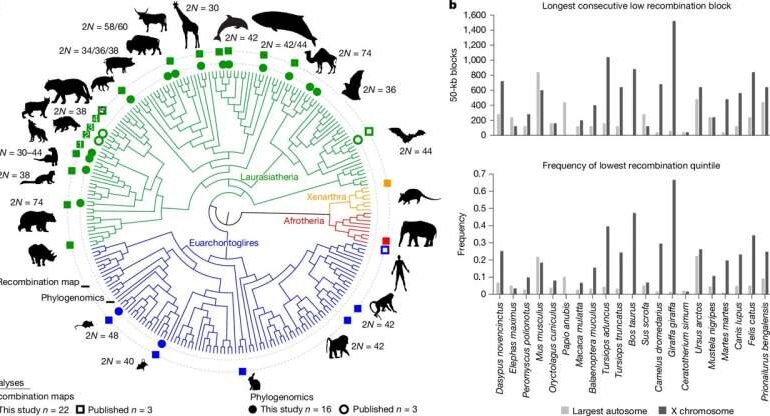AI Uncovers Genomic Insights to Distinguish Mammal Species

Scientists at Texas A&M University have employed advanced artificial intelligence techniques to identify a pivotal region on the X chromosome that has preserved the distinctiveness of mammal species for over 100 million years. Published in the journal Nature on November 12, 2025, this research provides critical insights into how species maintain their genetic identity amid hybridization, which typically blurs species lines.
The study, led by Dr. Nicole Foley, a research assistant professor at the College of Veterinary Medicine and Biomedical Sciences (VMBS), reveals that despite interbreeding among species such as big cats, wolves, and even whales, these animals continue to exist as separate species. “We know that species like big cats, wolves, dogs, and coyotes, and even whales and dolphins have interbred to create hybrid offspring. What has been less clear has been why, despite all this interbreeding, these animals have remained separate species,” Dr. Foley stated.
A significant challenge in understanding these dynamics has been the absence of comprehensive genetic recombination maps. These maps are essential for unraveling how genetic exchanges during reproduction, along with natural selection, contribute to the emergence of reproductive barriers. The use of AI-driven genome analysis now enables researchers to reveal this hidden blueprint of mammalian evolution.
Discovery of the XLRD
One of the study’s major findings is the identification of a vast region on the X chromosome known as the X-linked recombination desert (XLRD). This region, which constitutes nearly 30% of the X chromosome, has been conserved across most mammalian species for more than a century. The XLRD acts as a powerful reproductive barrier, helping to preserve the true evolutionary relationships among species, even in the face of extensive genetic mixing.
“Remarkably, the XLRD appears to be a recurrent and ancient feature in mammals, functioning almost like a genomic ‘time capsule’ that records deep evolutionary history,” Dr. Foley explained. She added that the uniformity observed across the X chromosomes of the 22 species studied indicated something functionally significant within this part of the chromosome.
Dr. Bill Murphy, a distinguished professor at the VMBS and director of the Texas A&M Center for Comparative Genomics, emphasized the importance of this finding. “We had some evidence from previous studies based on a small handful of species that the XLRD exists, but we were very surprised to discover that this region was so conserved and so ancient,” he stated.
Implications for Reproductive Biology
The researchers further noted that the XLRD region is notably enriched with genes associated with male and female reproduction, as well as sex chromosome silencing. This suggests that genetic switches related to X chromosome regulation may significantly influence infertility and conditions such as polycystic ovarian syndrome, which has been linked to reproductive and metabolic issues.
“This is one of the more novel findings because it has been thought that reproductive barriers arise rapidly and from unique genetic sources across different groups of species. Our results suggest this is not the case,” Dr. Murphy remarked. He concluded that the XLRD is likely a key region linked to reproductive dysfunction in hybrids and reproductive isolation in nature.
These discoveries not only enhance our understanding of mammalian evolution but also open new pathways for addressing human reproductive challenges. The implications of this research extend far beyond genetics, potentially informing treatments and solutions related to fertility.
The work, which highlights the intersection of artificial intelligence and genomic research, signifies a significant advancement in the field of evolutionary biology. As researchers continue to explore these genomic landscapes, the potential for further breakthroughs in understanding both animal and human reproductive health remains promising.






